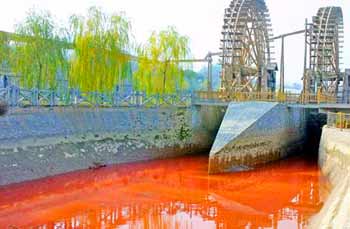| Home / Environment / News | Tools: Save | Print | E-mail | Most Read |
| Yellow River Running Red from Pollution |
| Adjust font size: |
A one-kilometer stretch of
Waste water was discharged by a station that provides heating for the two million people of The water contained a red dye which is believed to have been used by the factory to deter wily locals from siphoning off the hot water from the pipes for their own use. After taking samples, environmental officials found that the dye was not toxic. Residents who reported the incident to the local environmental protection bureau said the discharge lasted more than an hour. The incident comes exactly a month after the The
Known as the cradle of early Chinese civilization, the Yellow River empties into the (Xinhua News Agency November 22, 2006) |
| Tools: Save | Print | E-mail | Most Read |
 |
| Related Stories |
|
|||

